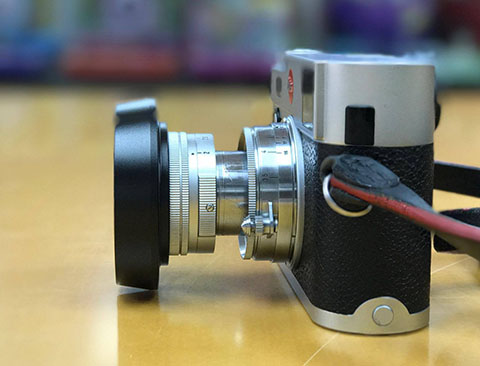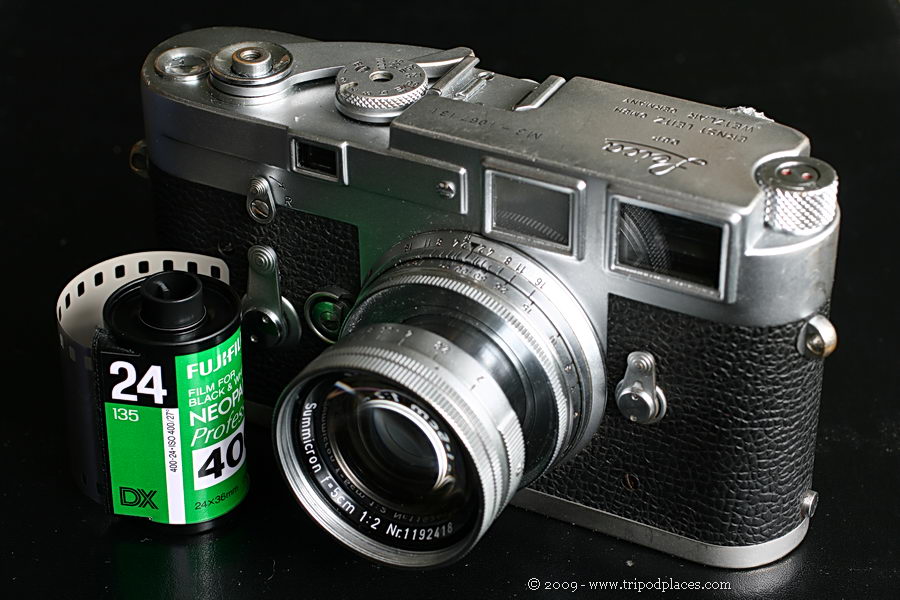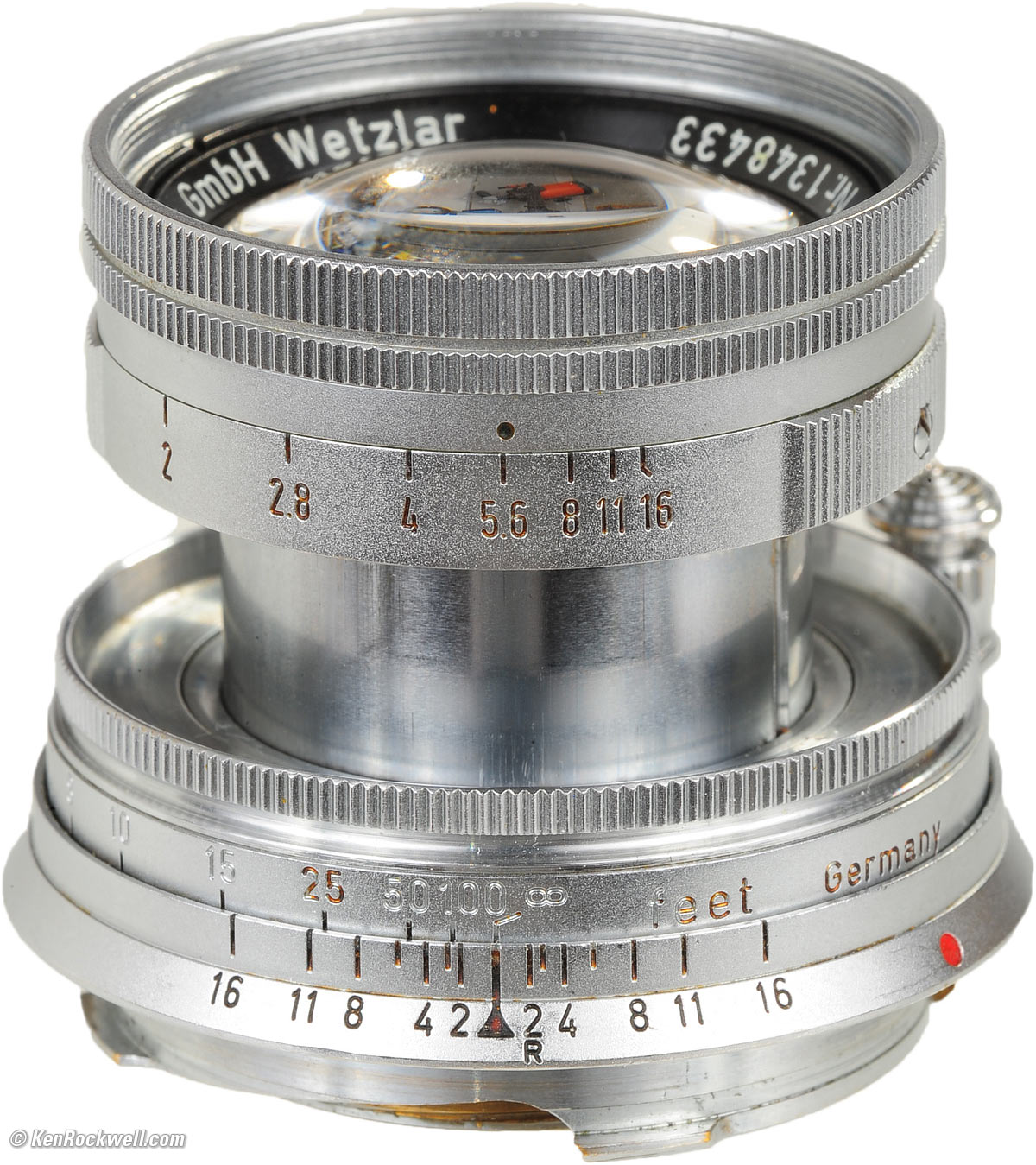
I like using SOOPD on faster-paced shoots where I wouldn’t typically bother with lens caps. While this folding mechanism is intuitively useful for stowing the hood, what I find quite genius about it is that the closed position of SOOPD serves as a lens cap for Summitar. The old barndoor hoods opened and closed by means of a precise and elegant little spring mechanism. These hoods were sold in the old style, red boxes with gold text. Leitz logo on the top-facing blade of this four blade barndoor assembly, along with the name “Summitar.” The placement of this logo is an easy way to spot the difference between Version I and II SOOPDs in online listings. The rear section of black SOOPDS is finished in distinctive crinkle coat black. SOOPD Version I was finished in either black paint or satin silver chrome. SOOPD works with both Summitar versions because it employees a thumb-screw-adjusted circular clamp to attach to the outer circumference of the lens. The earliest hood made for Summitar was called SOOPD. Please do let me know in the comments if you know more! I am unaware of any differences between screwing any Type L filter into a Summitar Version I, though admittedly, for every rule with early Leica, there do seem to be exceptions. Perhaps moreso than when fitted the standard way. The ITDOO clicked into place with a little play. I bought an original Type L green filter (GCYOO) in black paint, mounted it to my Summitar Version 2 and then tried both my ITDOO and SOOPD (hoods discussed below).

The tiny gap between the front ring of the lens and filter should create enough of a groove for the Leica clip-on hoods that we’re about to examine, to fit onto Version I Summitars.īeing unfamiliar with this recommendation first-hand and wanting to provide accurate accounts here, I decided to try it with my Summitar Version II. Screw an original Summitar filter onto your Summitar Version I. If you want to use more common, clip-on Leica hoods, there’s a simple way to do this. One problem, however, if you can call it that, is that these first generation Summitars do not have the provision for mounting clip-on hoods that Leica would develop and use for many following decades. Summitars made in the small window between 19 are often regarded as the most desirable due to having both the ten blades and the UV coating. The front element was uncoated until 1946. Summitars from the first decade of this models production run featured sought-after ten blade aperture diaphragms. One might divide Summitar lens types into more categories, for the intens and purposes of this discussion, I’m going to simplify them into just two versions.


I’m going to keep Summitar as my point of focus since it’s what I use but if you’re an early Summicron shooter, by all means, you’re welcome to huddle in with us too!Īnd before we get into hoods, we need to talk about the two main versions of Summitars out there, because yes, which version you have will dictate which hoods you can run.

Consequently, most Summitars and the Version I 50 Summicron can accept the lens hoods that I’m about to discuss. The Leica Summitar is the predecessor of the fabled Leica 50mm f2 Summicron and later copies of the Summitar even share the lens barrel with the early Summicron. This unusual design can make finding a well-fitting hood, or any accessory, a somewhat tricky. It’s a little complicated a task though, because Summitars have an odd outer diameter of 41.5mm and their inner threads are 36mm and recessed within the front ring. The correct original hood is fairly unpopular due to its size, thus I often see photographers looking for an appropriate alternative. And there are a number of possible hoods for the Summitar that photographers may be interested in trying. As previously stated, I think that earlier Leitz lenses require a hood in many circumstances to perform their best. I touched on this topic a little bit in a previous blog about hoods for various LTM lenses entitled Throwing Shade, but I wanted to drill down on lens hood options for the Leitz 50mm f2 Summitar.


 0 kommentar(er)
0 kommentar(er)
